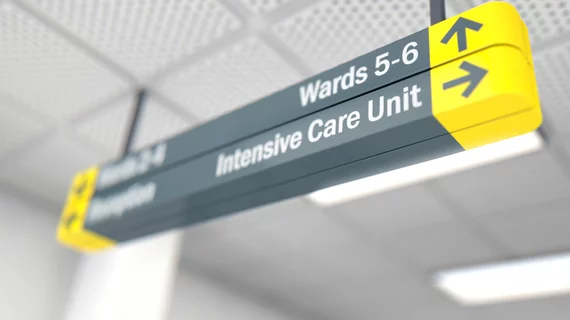Algorithm guides care of ICU patients at risk of acute kidney injury
Machine learning is no better than physicians at predicting acute kidney injury (AKI) in the ICU, where it’s a sign of poor outcomes ahead as soon as it appears. However, the AI approach is no worse at predicting AKI, either—and it can help mitigate physicians’ tendency to overestimate risks and overtreat low-risk patients.
Thus, there’s a net benefit to using the tool in conjunction with conventional means of risk assessment, according to researchers in Europe whose findings are running in Critical Care.
The team, led by senior study author Geert Meyfroidt, MD, PhD, of Katholieke Universiteit Leuven (KU Leuven) in Belgium, conducted a prospective observational study involving 252 patients in five ICUs of a tertiary academic center.
The patients were critically ill adults admitted to the ICU without AKI or end-stage renal disease.
The researchers had physicians complete structured questionnaires asking about expected AKI. The physicians filled out the forms at the time of each patient’s admission, the next morning and after 24 hours.
Comparing the physicians’ predictions with those of the machine-learning tool, “AKIpredictor,” Meyfroidt and colleagues found similar scores between the doctors and the algorithm.
The AKIpredictor proved better at calibrating the agreement between predicted probabilities and the observed frequency of AKI in the population and, in the process, at delivering significant net benefit.
The results point to potential uses of the tool in clinical practice in selecting high-risk patients as well as in reducing false positives, which helps avoid unnecessary therapies.
“[O]ur findings suggest a potential for overall improvement of care with the concurrent use of physicians’ expertise and the AKIpredictor,” the authors write, adding that more work is needed to validate their algorithm since the sample size was limited.
The authors note their present study confirmed previous evidence suggesting physicians tend to overestimate the risk of AKI in the ICU.
They point out that, since there is no treatment for AKI—and since preventive measures can offer only support, not reverse disease course—intuition would suggest there’s little harm in misclassifying a patient as high risk.
“However, if only high-risk patients were needed for a clinical trial or if a new, potentially toxic or expensive therapy for AKI became available, only the AKIpredictor would be able to identify the correct patients, limiting selection bias, unnecessary exposure or higher costs,” they write. “This situation corresponds to a high classification threshold for AKI, for which only the AKIpredictor showed net benefit.”
The study is available in full for free.

